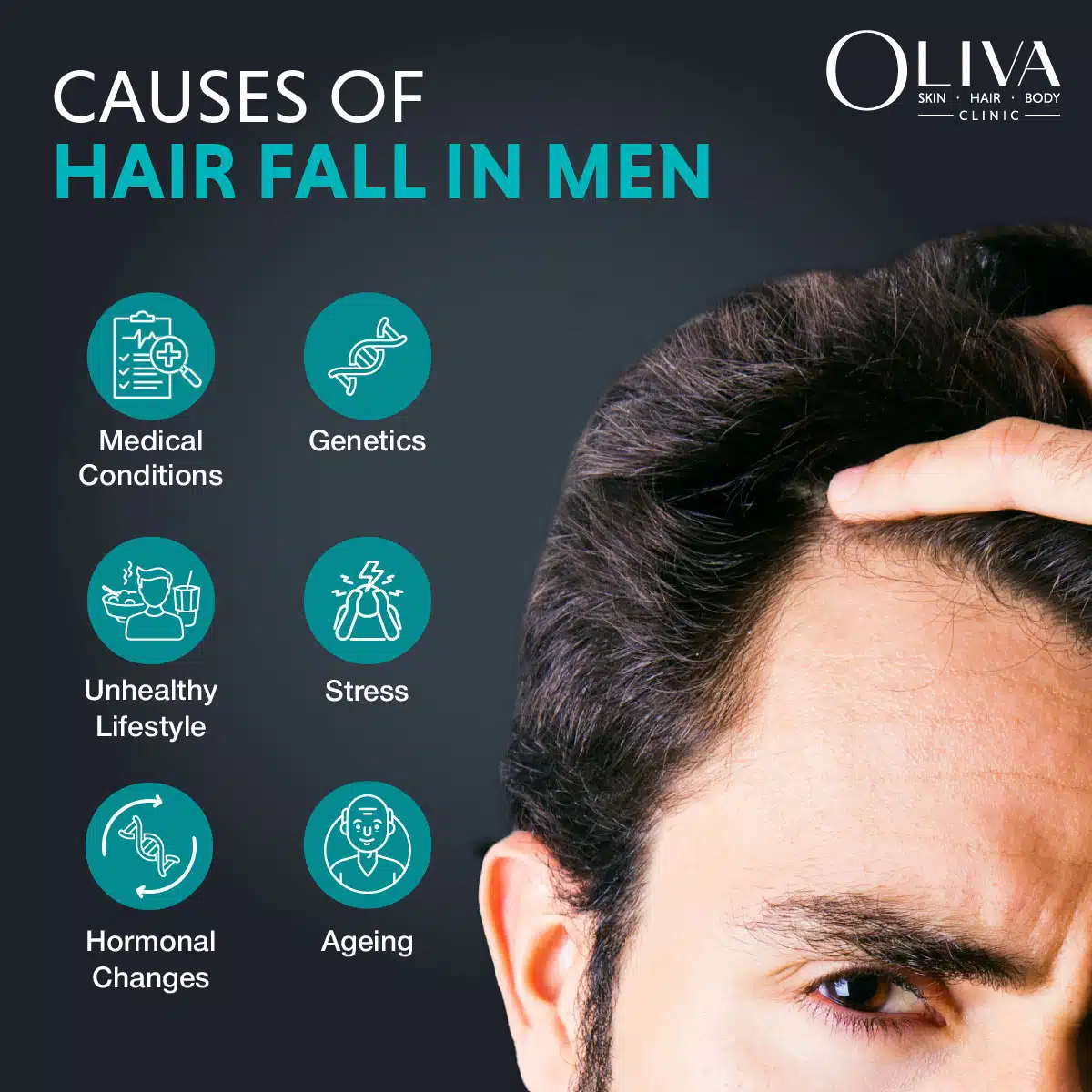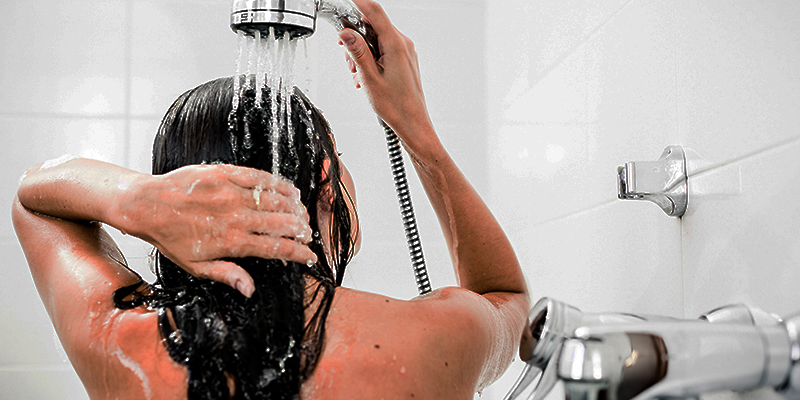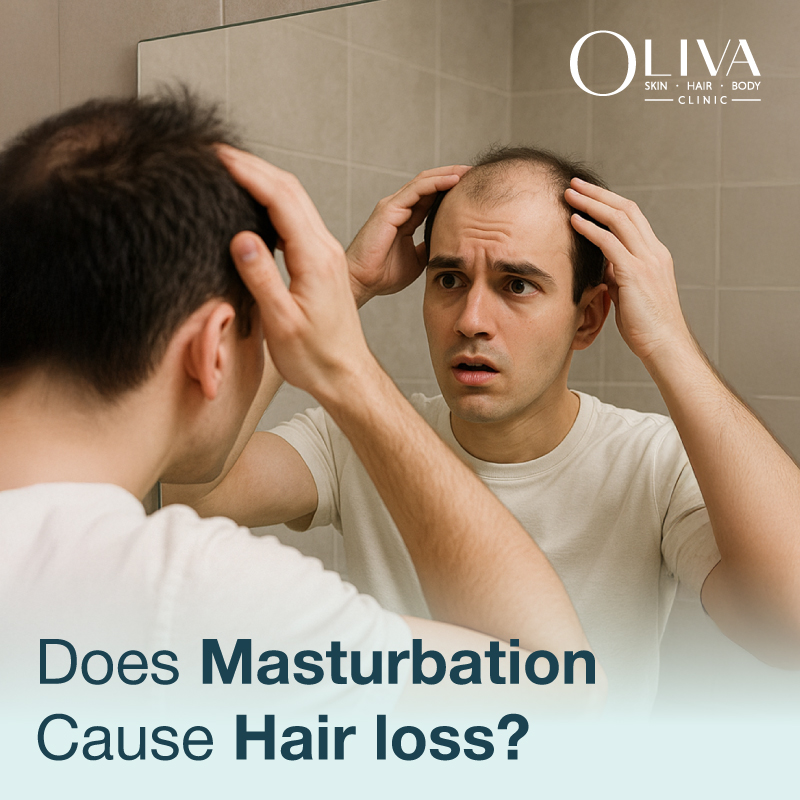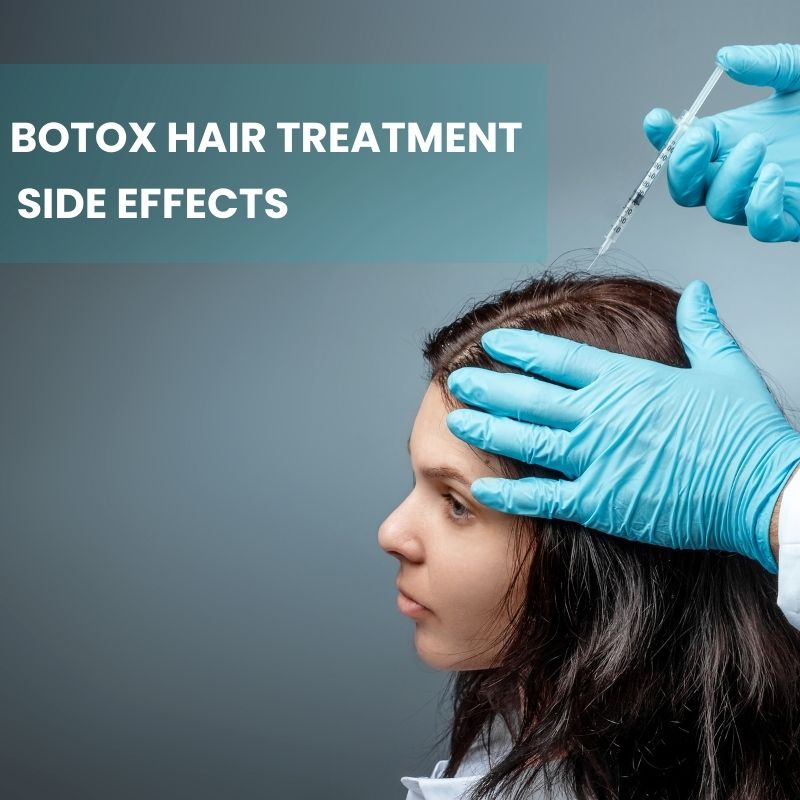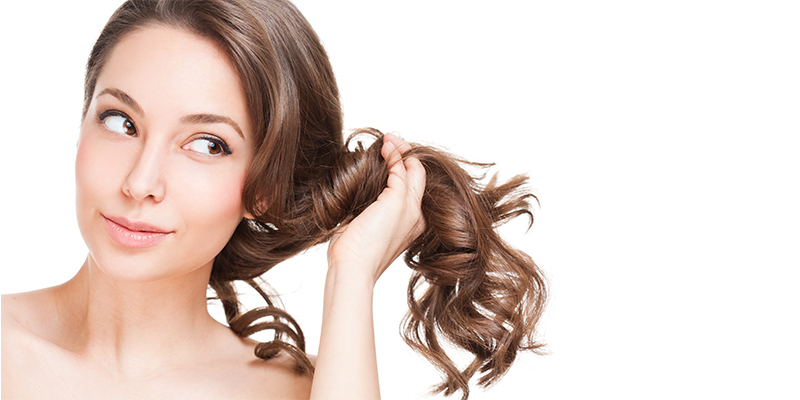In This Article
What Causes Receding Hairline – Treatments & Prevention
A receding hairline refers to the thinning and the subsequent loss of hair on the scalp. Signs of a receding hairline begin to show at the temple, moving towards the crown. As a result, a bald patch develops on the top and front of the scalp. This condition is more prominent in men and is also known as male pattern baldness which progresses with age. At least 20% of men notice visible hair loss during their 20s, 25% observe it during their 30s, and 50% start experiencing the thinning of their hair.
In This Article
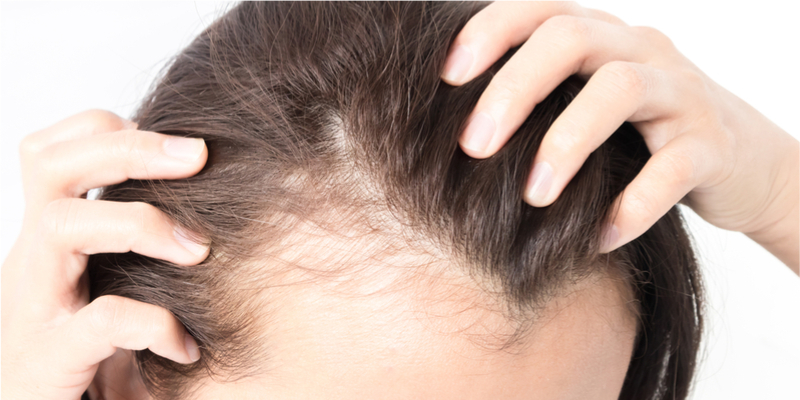
Why Is A Receding Hairline Most Common In Men?
Androgenic alopecia is a condition that is more common in men. Men produce androgens like dihydrotestosterone (DHT), which is a by-product of testosterone. It is known to shrink the size of the hair follicles, making it difficult for them to be active.
What Are The Signs And Symptoms Of A Receding Hairline?
In most cases, you will initially start to notice hair thinning from the temple region of the head, and from there, the hairline tends to move towards the back of the scalp, till the condition leaves a ring around the back of the scalp. This V-shaped hair growth on the front of the head is often referred to as a “Widow’s Peak”.
Signs that your Hairline is receding:
● Uneven Hairline – One of the easiest ways to identify a receding hairline is to observe how the recession occurs. If you notice that the front line of hair has uniformly receded, then it might be due to the maturity of your facial shape. However, if you see that the recession of your hairline is uneven and you have lost most of your hair near the forehead, then it may be a warning sign for a receding hairline.
● Thinning of the hair near the temple region – If you see significant hair loss around the temple region, then perhaps your hairline is receding. Note the texture, thickness, and overall quality of your hair from time to time.
● More hair fall than normal – If you shed more than the usual 100-150 strands a day, be on guard, as it is a prominent sign of hair thinning and the recession of your hairline.
What Are The Causes Of Receding Hairline?
A receding hairline, in most cases, manifests due to genetic reasons. One major change is the conversion of thicker and healthier hair into finer and thinner hair which gradually fall leading to baldness because of the DHT hormone which is formed from testosterone by the enzyme 5 alpha reductase.
On average, you lose 100-150 strands of hair in a day, which is considered normal. But if your hair follicles are damaged or affected by an external source, you may lose more than the normal. Though you may not notice the extra shedding, there is a high possibility that your hair loss is more than usual and you are already experiencing a receding hairline.
The following are a few factors that cause the recession of hairline:
1- Age –As one age, the regeneration of hair follicles slows down which in turn results in a receding hairline. Though hair loss is considered to be a part of ageing, it can affect younger men as well due to other factors.
2- Family history – The recession of your hairline is hereditary. Typically, individuals with a family history of hair loss and baldness, are more prone to this condition. The times at which a person starts to lose hair is governed by many external factors like stress, physical health, etc.
3- Hormone changes – Hormonal changes can be caused due to various factors in both men and women. It is a major cause of hair thinning and hair loss. The DHT hormone in men is considered to lead to hair thinning. The role of DHT in women is inconclusive.
4- Stress –Stress, whether emotional or physical, is known to have an impact on your body and your hair causing hair thinning and hair loss.
Also Read: How To Stop Hair Loss Due To Stress And Anxiety?
5- Medication – Certain medication has side effects like the thinning of hair and hair loss. For example, the medicines that are prescribed for cancer, blood pressure, gout, heart disease and depression are known to cause hair loss.
How To Diagnose Receding Hairline?
One of the tests performed by a dermatologist is a “pull test”, in which they pull a few strands of hair to see how many of them fall out easily, without much pressure.
A Trichoscope is an important tool which helps in the early diagnosis and intervention of hair loss. In the process of diagnosing the cause of hair loss, when in doubt, dermatologists conduct a biopsy of scalp tissues/hair, to determine whether the cause of hair loss is due to a scalp infection. A small amount of the affected area of your scalp is scraped as a sample, which will be tested for any signs of infection or disease that is linked to hair loss.
Blood tests may also be conducted, to see if your hair loss is because of conditions like thyroid disorders, anemia, etc. which alleviates the need of biopsy.
A proper diagnosis by an expert dermatologist can help find the root cause of your receding hairline and determine the right course of treatment.
Treatment For A Receding Hairline
1- PRP treatment for hair regrowth and restoration –
Platelet-rich plasma (PRP) is the latest non-surgical treatment, ideal for treating a receding hairline. In PRP, your blood is collected and activated platelet-rich plasma is then injected back into the scalp. This activated PRP stimulates the growth of new hair follicles, thus bringing natural hair re-growth and restoration. Additionally, medicines will also be prescribed to prevent further hair loss.

2- Medication –
● Minoxidil is recommended to reverse and slow the process of hair loss.
● Finasteride is an FDA approved hair loss treatment for men, in pill form.
● Dutasteride is another drug being increasingly prescribed for androgenetic alopecia with a receding hairline. It is effective in regrowth and restoration of hair.
● Additionally, topical medication can be rubbed into the scalp to help in restoring hair growth and stop a receding hairline.
Also Read: What Is PRP Hair Treatment & How Much It Cost?
3- Hair Transplant –
Follicular unit extraction is a cutting-edge technique of surgically harvesting the receding hairline with hair grafts. In this procedure, hair grafts are removed from the back or other donor areas of the body and then transplanted to the recipient area, using a precision tool. There may not be prominent scarring from the procedure which varies with each case.
Before And After Results
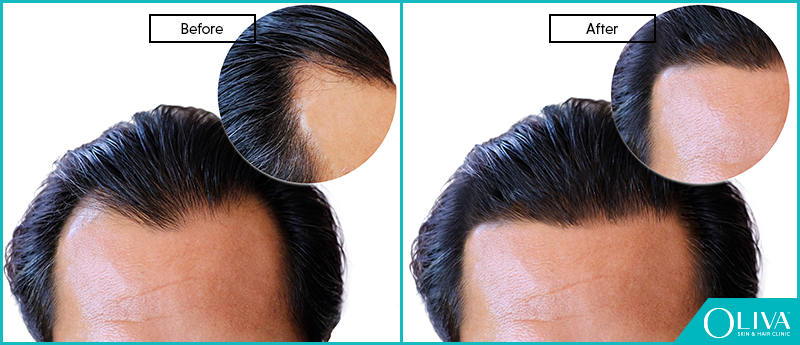
How To Prevent A Receding Hairline?
1. Maintain a healthy routine and ensure that your diet includes the recommended amounts of vitamins and minerals. Poor eating habits reflect poorly on your hair follicles, nails, and skin as well.
2. If you are diagnosed for a scalp infection, it is important to strictly follow the medication schedule prescribed by your dermatologist. Otherwise, it will be difficult for your body to keep the hair follicles healthy, leading to permanent hair loss or baldness.
3. Avoid high tension hair styling. A tight ponytail, pigtails etc., can damage your hair shaft and ultimately lead to hair loss.
4. Protecting your hair while you sleep can also help reduce the effects of hair loss. Use a silk or satin pillowcase, as it causes less friction, letting your hair slide across the pillow rather than being pushed across, which is the case with cotton pillow covers.
5. Stress management in the form of exercise or meditation puts the mind and body in a state of relaxation which can control the effects of hair loss.
Frequently Asked Questions
Yes, wearing your hair up in the form of tight ponytails and buns can cause a receding hairline as these hairstyles can lead to traction alopecia. The excess strain on the follicles due to these hairstyles, cause hair to break and fall out.
Yes, it is possible for women to regrow hair on a receded hairline. PRP therapy, nutritional supplements, minoxidil, hormonal therapy, hair transplants etc. are the types of treatments available.
Biotin is a vitamin which is known to promote healthy hair and skin, mainly if you are known to have a biotin vitamin deficiency. But for genetic causes, biotin may not work.
The best way to treat receding hairline is early diagnosis and treatment. Earlier the treatment is started the better your chances are to restore the hairline. With modern tools of diagnosis and a consultation with an experienced dermatologist will help determine the root cause putting you on the road to recovery.
Our certified subject matter experts do extensive research and collate facts from reputed scientific journals and international studies to create informative and engaging articles related to all your dermatology concerns. They strive to help you decipher medical jargon, distinguish fact from fiction and overcome paranoia. Our qualified medical board or expert panel goes a step further to verify these facts based on their rich academic knowledge, vast clinical experience and critical industry insights to ensure you consume only medically accurate content that empowers you to make informed decisions about your hair and skin-care treatments and weight management. Check out our Editorial policy for further details.



